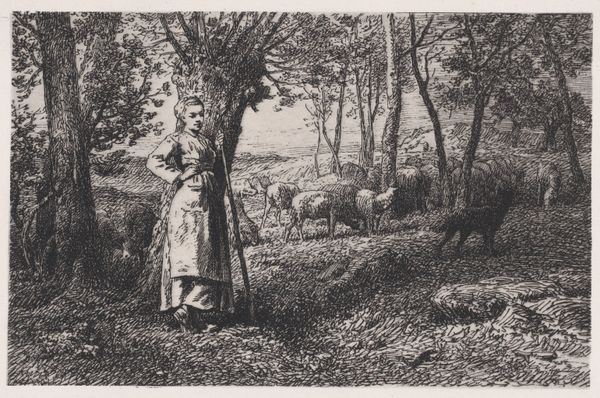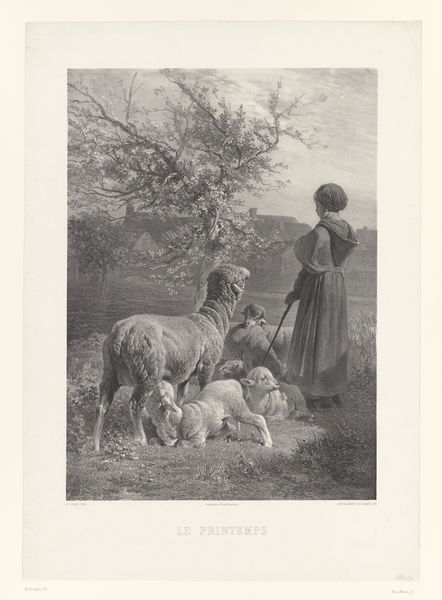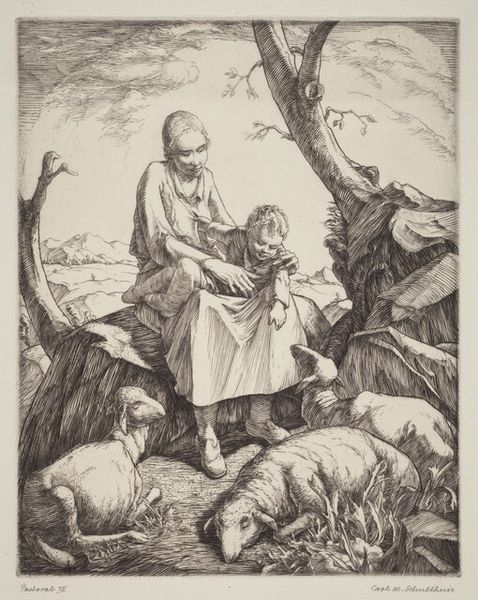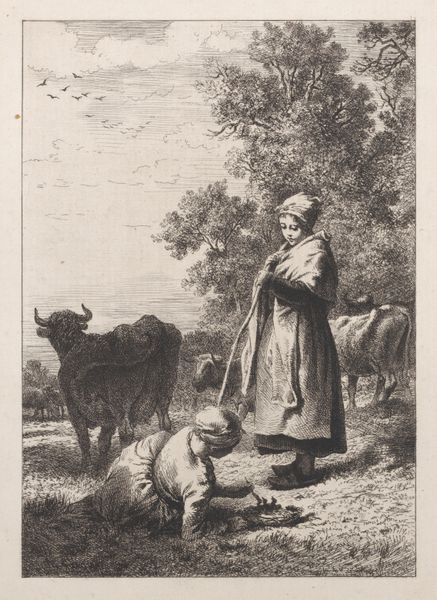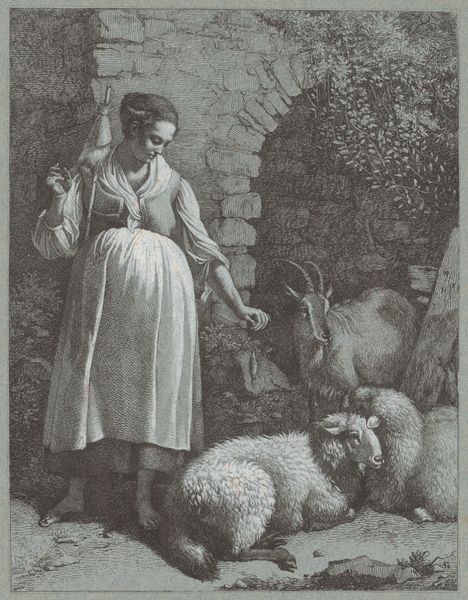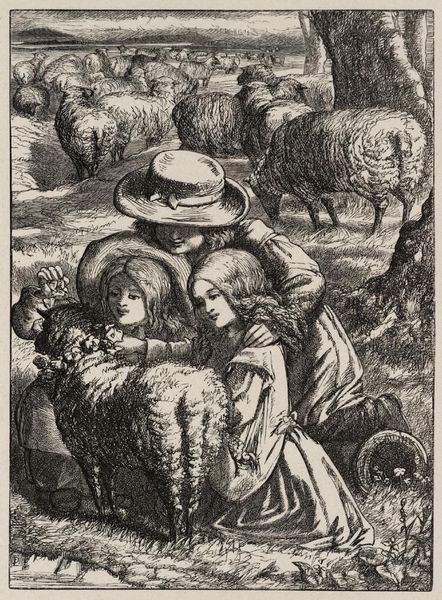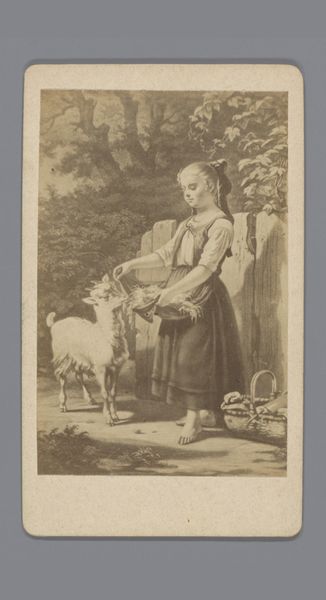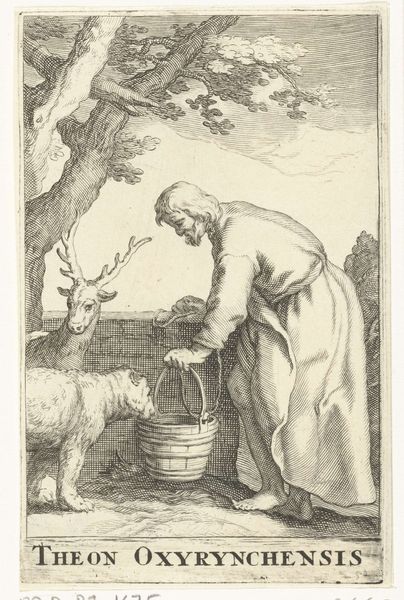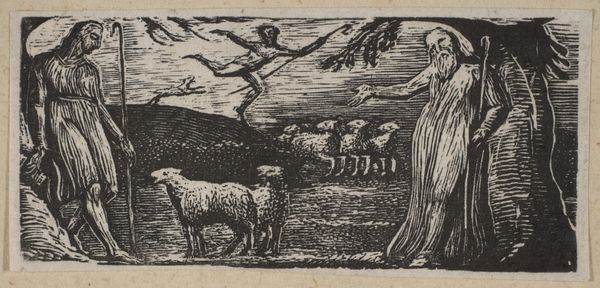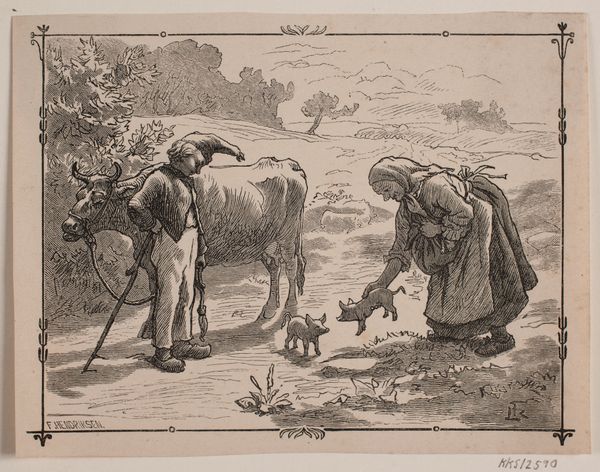
drawing, print, engraving
#
drawing
# print
#
landscape
#
genre-painting
#
engraving
#
realism
Dimensions: Sheet (Trimmed): 8 7/8 × 6 11/16 in. (22.5 × 17 cm) Image: 7 13/16 × 5 1/2 in. (19.8 × 14 cm)
Copyright: Public Domain
Editor: So, here we have Charles Jacque’s “Une Bergère,” an engraving from sometime between 1848 and 1864. The delicate lines give it a surprisingly gentle feel, especially with that bare tree looming over the shepherdess and her sheep. What elements stand out to you in terms of composition and form? Curator: The composition hinges on a fascinating interplay of textures and contrasting tonal values. Observe how Jacque masterfully manipulates light and shadow to articulate the volume of the sheep, setting it off against the delicate hatching that defines the shepherdess’s form and garments. The bare tree, as you noted, serves not merely as backdrop, but rather as a structural element, its intricate network of branches mirrored in the textured ground. It’s a dialogue between organic and constructed form, wouldn't you agree? Editor: That's a great point about the organic versus constructed form. Now that you mention it, the shepherdess seems almost secondary to the overall design, blended into the landscape itself. What about the relationship between foreground and background? Curator: Precisely. Note the shallowness of the picture plane. Jacque denies us deep recession, flattening the pictorial space to emphasize the surface qualities of the print itself. The details of the distant cottage are softly rendered, subtly compressed. The overall effect directs our gaze towards the meticulously rendered textures of the sheep and the immediate foreground, rewarding close inspection of the artist's graphic skill. A question for you: How might these formal strategies relate to the Realist aesthetic embraced during this period? Editor: I suppose the lack of idealization and focus on observable details would be central to the Realist approach. Curator: Indeed. And it underscores Jacque's dedication to capturing the essence of rural life without embellishment. Considering our discussion, what have you observed about the ways the graphic elements serve the Realist aesthetic in the context of Jacque's era? Editor: It's really opened my eyes to how the artist uses line and form, rather than just subject matter, to convey that sense of grounded reality. I will need to look more closely in that aspect when analyzing art from now on. Thanks for pointing that out.
Comments
No comments
Be the first to comment and join the conversation on the ultimate creative platform.


